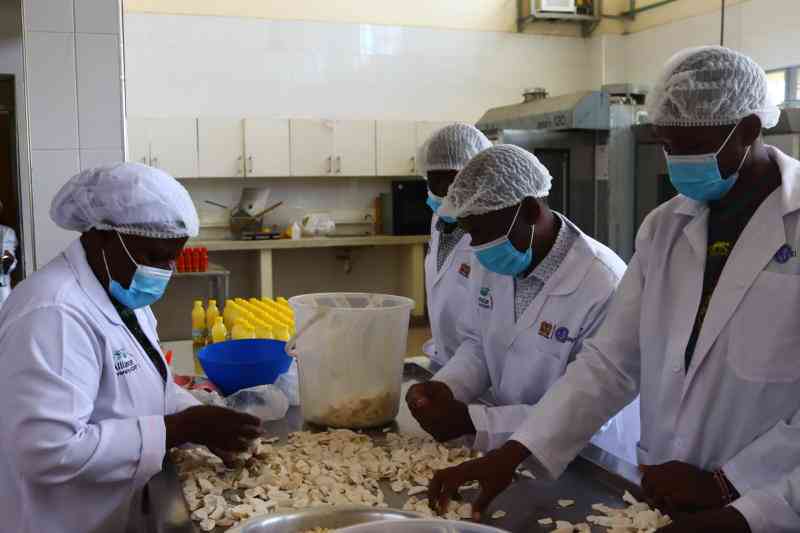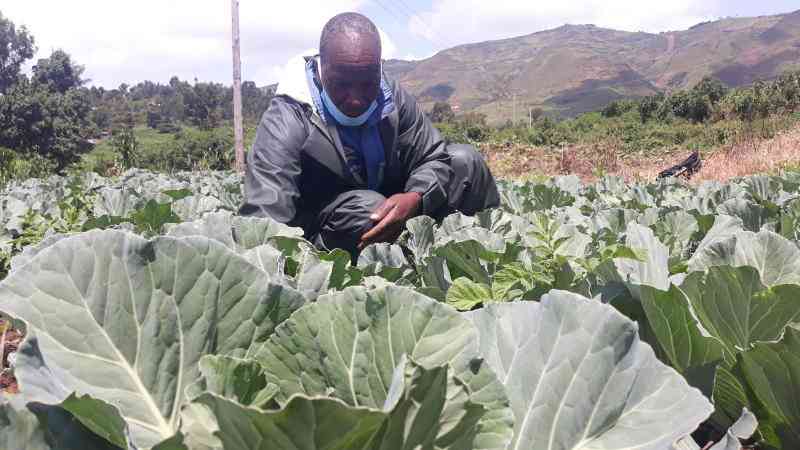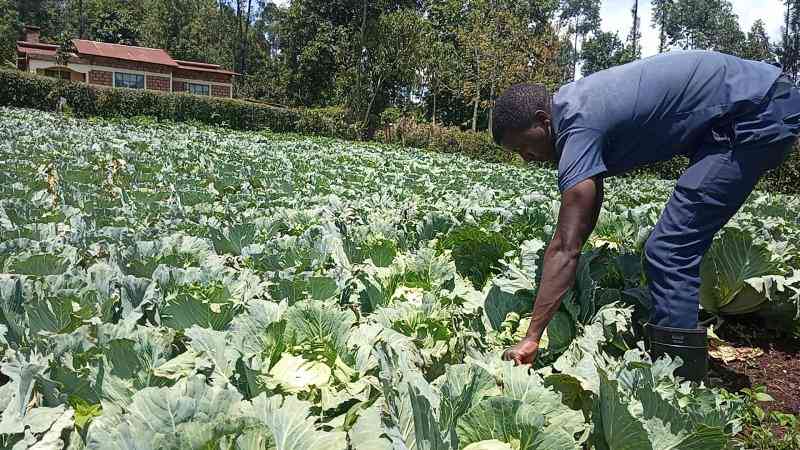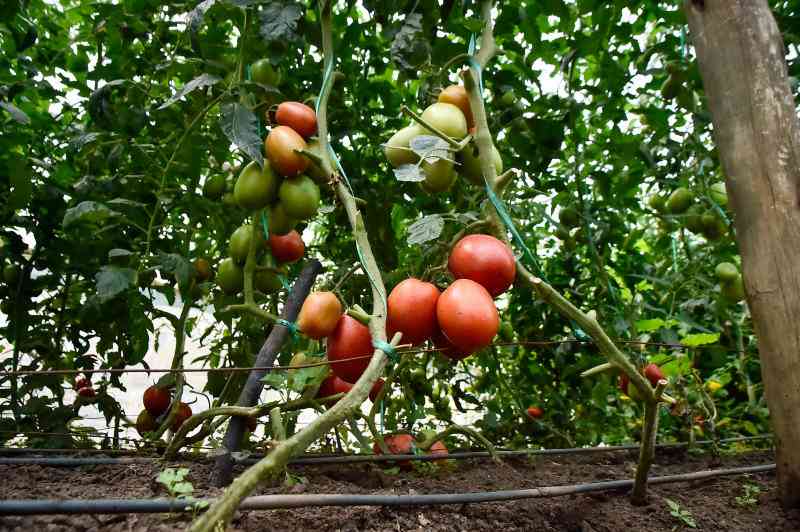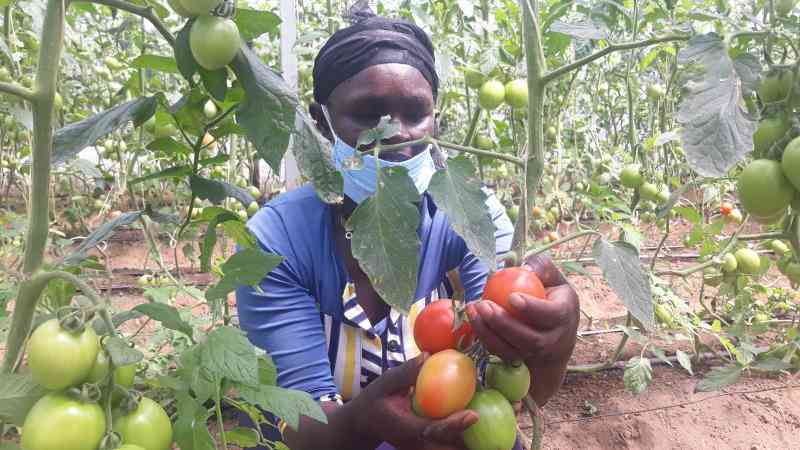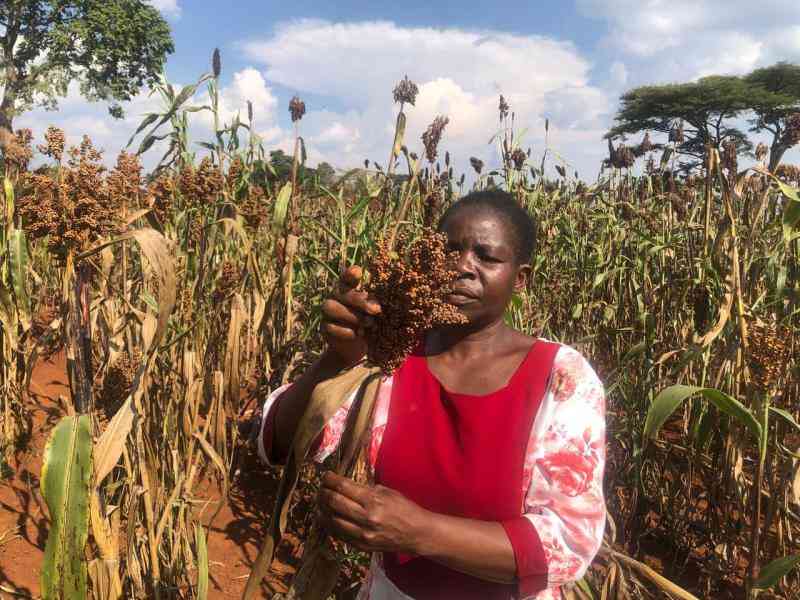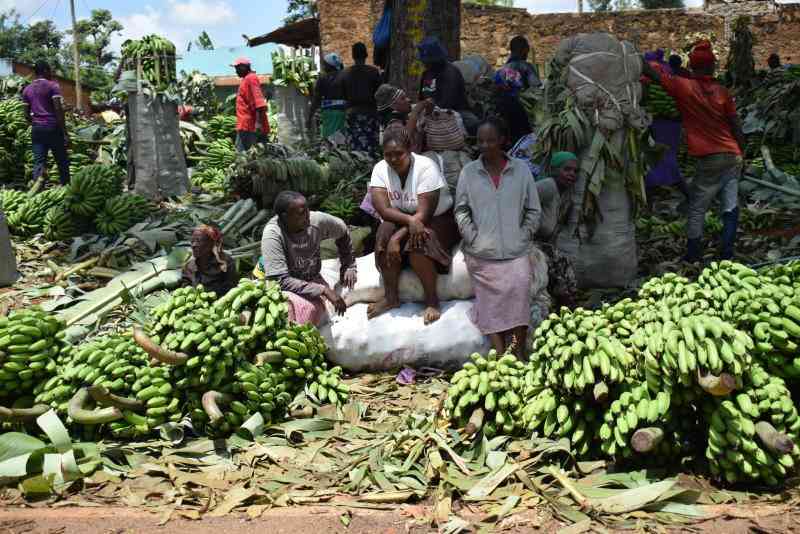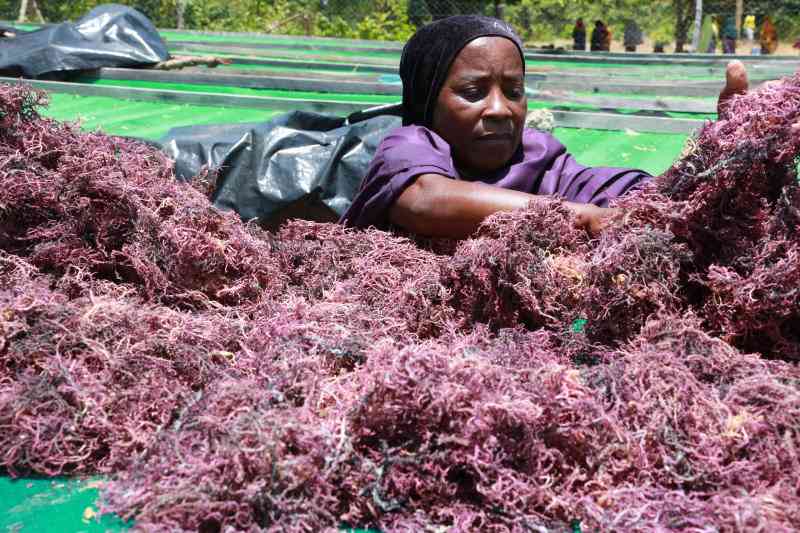
The chairperson of Kibuyuni Seaweed Farmers Organization Fatuma Mohammed Usi sorts some of the ready dried harvested seaweed. [Gideon Maundu, Standard]
If you tour Kibuyuni village in Kwale county, you might spot a group of women, busy along the ocean doing seaweed farming.
Seaweed farming which is the practice of cultivating and harvesting seaweed or algae has proved to be economically viable for women on the Coast, who previously were not allowed to engage in fishing. Many are now eking a decent living from it.
That huge potential explains why Kwale County government is keen on expanding its cultivation and production and exploring partnerships with like-minded stakeholders.
Kwale County governor Fatuma Achani noted that ocean farming can offer economic opportunities to local fisherfolk that have lost jobs due to declining offshore fisheries.
Seaweed cosmetics
She said the county government plans to establish seaweed farming along its shoreline as part of efforts to develop the commodity in the fisheries sub-sector.
Seaweed has many opportunities for value addition. Extracts from dried seaweed can be used in the cosmetic and pharmaceutical industries as well as fertiliser production.
Seaweed also can be processed into animal feed and as a packaging replacement for plastics.
Achani observed that seaweed farming has bright prospects and offers alternative livelihood options to coastal communities and increases food security.
Governor Achani was speaking when she visited Kibuyuni seaweed farming sites in the Shimoni, Lunga Lunga sub-county accompanied by the Costa Rican ambassador to Kenya Ms Giovanna Valverde Stark.
Kibuyuni village, a seaside village of 2,500 people holds Kenya's first ever seaweed model farm.
The farm was established by Kenya Marine and Fisheries Research Institute helped in 2012.
"We have discussed key areas of partnership between the county government of Kwale and the government of Costa Rica, especially in programmes related to the blue economy and climate change," she said.
Achani said the county and the Costa Rican embassy will be looking for markets jointly for seaweed products.
Threats of illegal fishing
"We are working closely with our development partners to market the seaweed produce outside the country and improve local farmers' livelihoods," she said.
Achani noted that seaweed farming has not only helped uplift the socio-economic condition of families along the coastline but also helped in the recovery of its coastal waters from the threats of illegal fishing.
She noted that seaweed farmers are out at sea almost every day to check on their seaweed hatcheries and thus their presence has helped in reducing illegal fishing activities.
Ms Giovanna on her part said the Costarica Government is partnering with coastal counties to undertake projects that mitigate effects of climate change that lead to global warming.
She said they will work with the devolved government in large-scale seaweed cultivation to increase production and obtain a lucrative international market for the local farmers.
International markets
"Expansion of seaweed farms has the potential to boost local incomes, food security, and environmental conservation," she said.
On her part, Kibuyuni Seaweed Farmers' organisation chair Ms Fatuma Mohamed welcomed the partnership between Kenya and Coast Rica to boost sea weed farming.
Mohamed explained to the visitors how seaweed is processed.
She said that the seaweed takes three to six days to dry.
Thereafter the product is cleaned and packed and sold to local cooperatives at Sh30 per kilogram while the cooperative sells it at Sh35 per kilo.
Mohamed noted that there are two strains of seaweed known as Kappaphycus alvarezii (Cottonii') and Eucheuma denticulatum (spinosum) that grow on the Shimoni seaweed farming sites.
At the farm site, one can obtain fresh seaweed straight from the farm, dried, or in powder form.
Indeed, seaweed farming has many benefits.
"Unlike farmers on land, seaweed farmers enjoy vast areas of water for scaling up seaweed production with robust growth potential," Mohamed said.
Huge potential
Experts estimate that seaweed farming could earn the country up to Sh40 million annually and help uplift thousands of lives of those who depend on fisheries.
In 2019 the coastal county made history after local farmers exported 100 tonnes of seaweed to Europe at Sh2 million.
The 100-tonne consignment was loaded at the Kibuyuni Seaweed yard in Kibuyuni village.
KMFRI has been leading other research agencies in conducting studies on the commercial viability of seaweed farming.
Research
The studies have uncovered a market potential that could place the country in the same league as its neighbours Tanzania, which, for 20 years, has been supplying the global seaweed market with a sizeable product.
According to Fatma Manyenze a Marine and Education project coordinator at Conservation Education Society a lot of untapped potential still exists for seaweed farming in Kenya. According to the World Bank analysis, seaweed farming is particularly important for women, rural populations, and indigenous people.
Environmental Health
Manyenze notes that the expansion of seaweed farms has the potential to boost local incomes, food security, and environmental health.
Reports show that processed seaweed products enter the global market where they are used as thickening agents in industrial food products and cosmetics.
For a long time, Kibuyuni villagers viewed seaweed farming as subordinate to fishing until fish stocks began to run out on the back of a declining market for seafood. But now things are slowly changing.
Through seaweed farming, the Kibuyuni Seaweed Farmers, who are mostly women, have managed to increase their income, invest in table banking, and improve the lives of their children, as well as build better houses.
In the 1960s, Norway pioneered the production of the seaweed meal, made of dried and powdered brown seaweed which was used as an additive in animal feed.
The use of seaweed for food for humans has been traced back to the fourth century in Japan and the sixth century in China.
Today, these two countries and South Korea are the largest consumers of seaweed foods and their requirements provide the basis of an industry that worldwide harvests six million tonnes of wet seaweed a year.
China is the largest producer of edible seaweeds, and the five million tonnes produced annually is largely for local consumption.
 The Standard Group Plc is a multi-media organization with investments in media platforms spanning newspaper print
operations, television, radio broadcasting, digital and online services. The Standard Group is recognized as a
leading multi-media house in Kenya with a key influence in matters of national and international interest.
The Standard Group Plc is a multi-media organization with investments in media platforms spanning newspaper print
operations, television, radio broadcasting, digital and online services. The Standard Group is recognized as a
leading multi-media house in Kenya with a key influence in matters of national and international interest.


